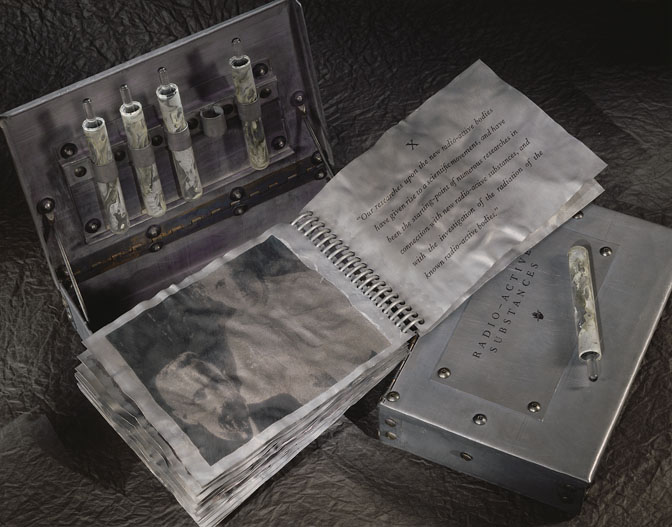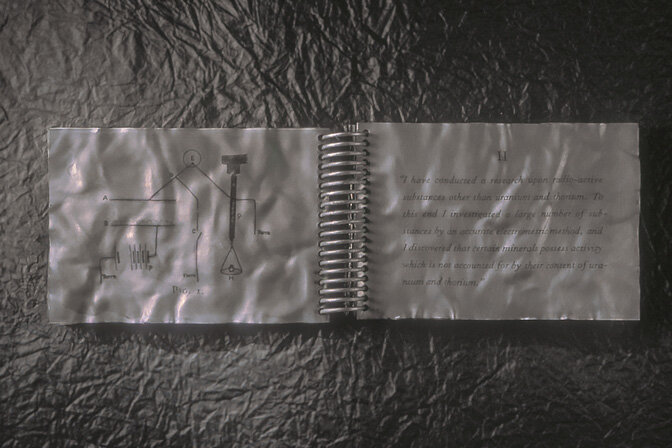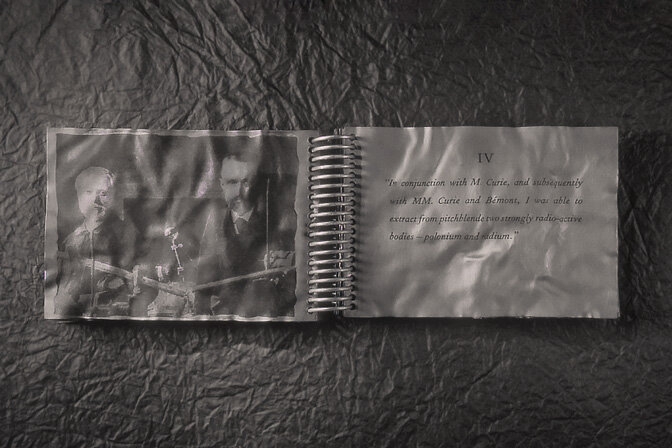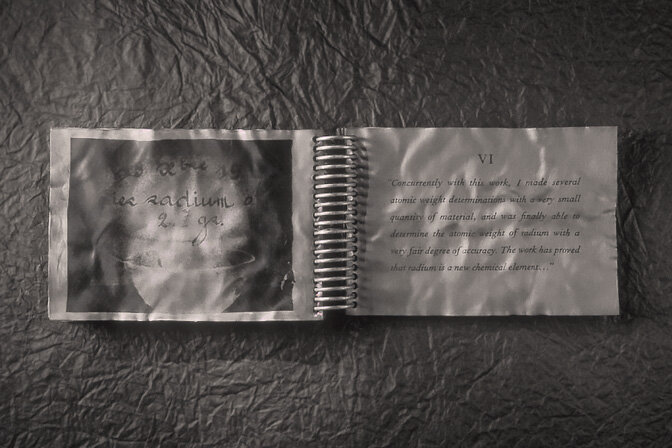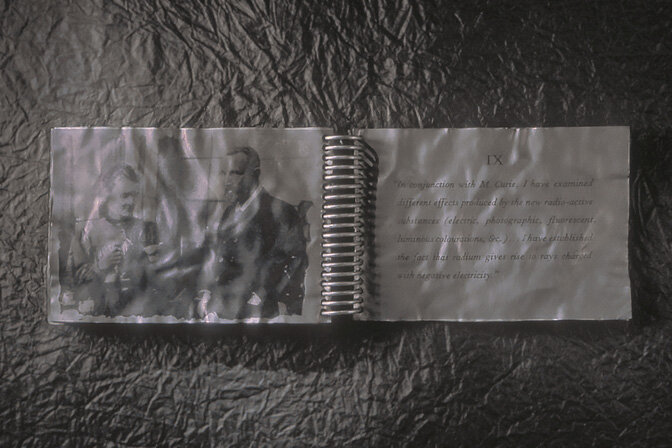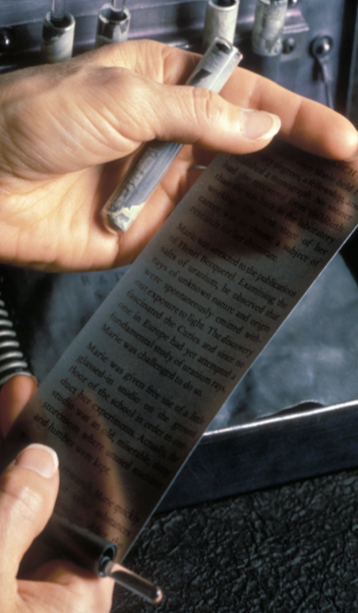Radio-Active Substances
Radio-Active Substances, 1994-97
5" x 6" x 2", Limited Edition of 20
Lead, Glass, Polaroid Emulsion Transfers
The first scientist to win the Nobel Prize twice (in 1903 and again in 1911), Marie Sklodowska Curie attained honors beyond the dreams of most women of her time. Created for the 1993 Smithsonian exhibition, "Science and the Artist's Book," Radio-Active Substances is Susan kae Grant's evocative interpretation of Curie's 1903 dissertation presented at the Sorbonne in Paris. Using juxtaposed images and text, Grant examines Curie's achievements as a scientist. Radio-Active Substances portrays Curie's struggle to balance her obsession for knowledge and scientific inquiry with the traditional duties of wife and mother in an era when women were dissuaded from scientific pursuits. The book also illustrates the physical and emotional toll that comes from exposure to toxic substances.
From the Smithsonian Institution Libraries:
”Science and the Artist's Book is an exhibition which explores links between scientific and artistic creativity through the book format. In 1993, the Smithsonian Institution Libraries and the Washington Project for the Arts (WPA) invited a group of nationally recognized book artists to create new works of art based on classic volumes from the Heralds of Science collection of the Dibner Library of the History of Science and Technology, a part of the Smithsonian Institution Libraries' Special Collections. The resulting artist’s books are each inspired by the subject, theories or illustrations of the landmark works of science with which they are paired.”
Radio-Active Substances resonates with an aura of scientific discovery while also telegraphing danger, fear, decay and toxicity. Every book in the edition is protected in its own mauve-stained lead box along with five glass lead-lined, glow-in-the-dark test tubes, each containing a velum scroll of text. Images and text on spiral-bound lead pages illustrate Madam Curie’s scientific research. The texts of the velum scrolls tucked into the test tubes articulate Curie's personal life as mother, wife, and scientist. The writings also draw attention to the dangerous conditions Curie and her husband, Pierre, worked in and, consequently, the physiological effects they suffered from exposure to radium. Curie died at age 66 from aplastic anemia from her exposure to radiation.
The texts of Radio-Active Substances are printed directly on one-pound lead pages with a Tektronix Phaser 300i printer. After seeing the Tektronix print on a tortilla at a conference and then deciding that lead [with its symbolism as an isolator of radiation] would be the book’s substrate, Grant contacted the printer’s local headquarters. After some initial collaboration, Tektronix generously donated the use of a Phaser300i along with tech support to complete the project.
The photographic images in the book were scanned from a variety of historical sources and transferred directly to the spiral bound lead pages. After initially printing the pages with the Tektronix and finding the results too “new” looking, Grant employed the Polaroid Emulsion Transfer Process in order to resemble the look of old tintypes. A materials grant from the Polaroid Corporation provided all the Type 55 Polaroid film needed to complete the entire edition.
Acquisitions & Exhibitions:
Contact Susan kae Grant
